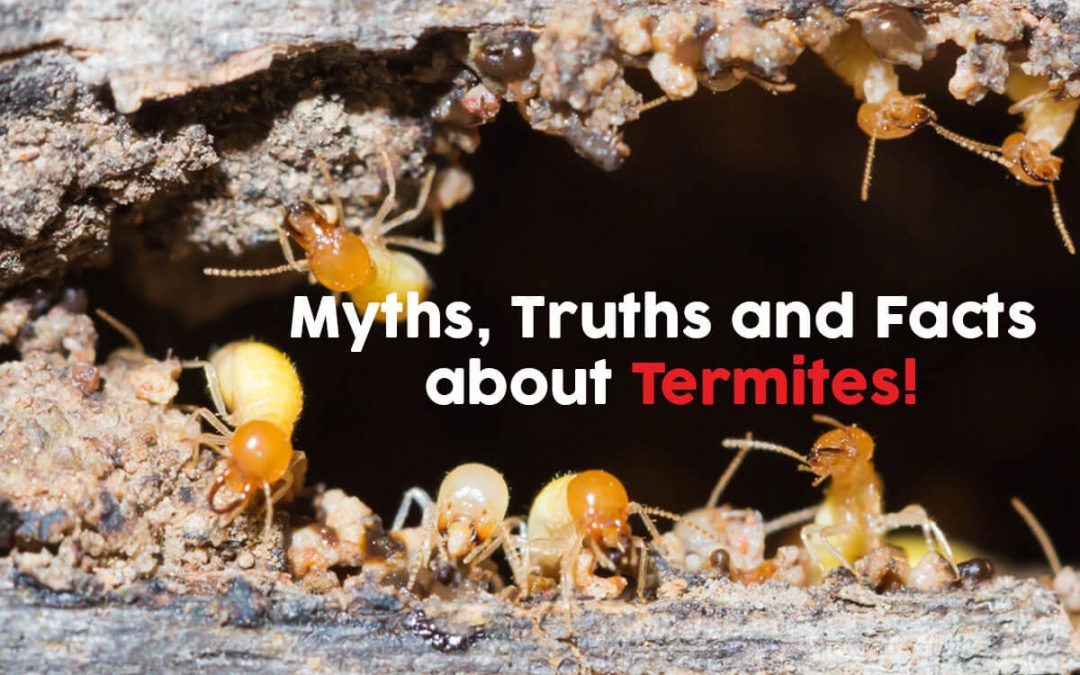Revealing the Truth About Termite Myths in Queensland
Uncovering the reality behind common misconceptions surrounding termite behaviors and their destructive tendencies. If your property harbors timber, particularly in Queensland, the likelihood of termites lurking nearby is significant. Let’s dispel these myths and shed light on the truth about termite behavior, ensuring your property stays protected.
MYTH:
“Sure, we’re aware of termites, but they’re just in the fences and seem content with plenty of food there!”
TRUTH:
Termites, with their insatiable appetite for timber, will seek food wherever it’s available. Their Queen’s prolific egg-laying capacity, up to 2000 eggs per day, translates to hundreds of thousands of workers scouring an area as large as a football field around their nest.
MYTH
“My neighbor assured me that the termites consuming my retaining wall won’t target my house!”
TRUTH
In Australia, there are 350 termite species, with South East Queensland hosting two of the world’s most destructive types. House frames, window frames, door frames, and skirting boards offer a rich food source for advancing termite colonies. How knowledgeable is your neighbor about termite expertise?
MYTH
Termites won’t attack Hardwood timbers!
TRUTH
Termites are known to target hardwood timbers and can cause damage to plasterboard, carpets, plastics, books, artwork, clothes, electrical insulation, and fit-out timbers.
MYTH
“We had a termite inspection done when we purchased the house two years ago… I don’t believe they’re present; we never see them!”
TRUTH
It’s essential to schedule termite inspections every 6 to 12 months. Termites, often unseen, can silently consume your home, resulting in significant damage before detection. Early identification of termite infestations is paramount to avoid costly repairs.
MYTH
“I have a steel frame house, I don’t need to worry about termites!”
TRUTH
Termites pose a threat to all types of homes, not just those made of timber. They can infiltrate your home through small cracks, consuming window frames, skirting boards, floorboards, and wall linings. While the risk of significant structural damage to steel or masonry houses is lower, all homes are vulnerable to termite infestations. Regular termite inspections are essential to detect and prevent infestations.
MYTH
“I can’t have termites because I have termite protection built into my house!”
TRUTH
No termite management system is 100% termite proof. If this was the case, you would not need to have annual termite inspections. Pre-construction termite management systems are designed to make it more difficult for termites to enter your house by detering concealed entry into buildings. Termites can still enter your home through small cracks and joins in concrete slabs or around the external walls.
MYTH
I don’t need termite protection because I spray around the house for termites!
TRUTH
Surface spraying is not an effective method for treating termites. These pests establish nests underground or in tree trunks, tunneling through soil and constructing mud shelter tubes to access buildings. Effective termite treatments involve baiting or underground chemical applications for lasting results.
MYTH
It’s OK, my insurance company will cover the termite damage!
TRUTH
Insurance companies typically do not provide coverage for termite damage, which surpasses the combined damage caused by floods, fire, and theft. Certain termite companies offer warranties against infestations with full protection installation around buildings. These insights shed light on the myths and truths about termites. To ensure peace of mind, prioritize regular termite inspections and proactive measures to protect your home from potential termite attacks.

